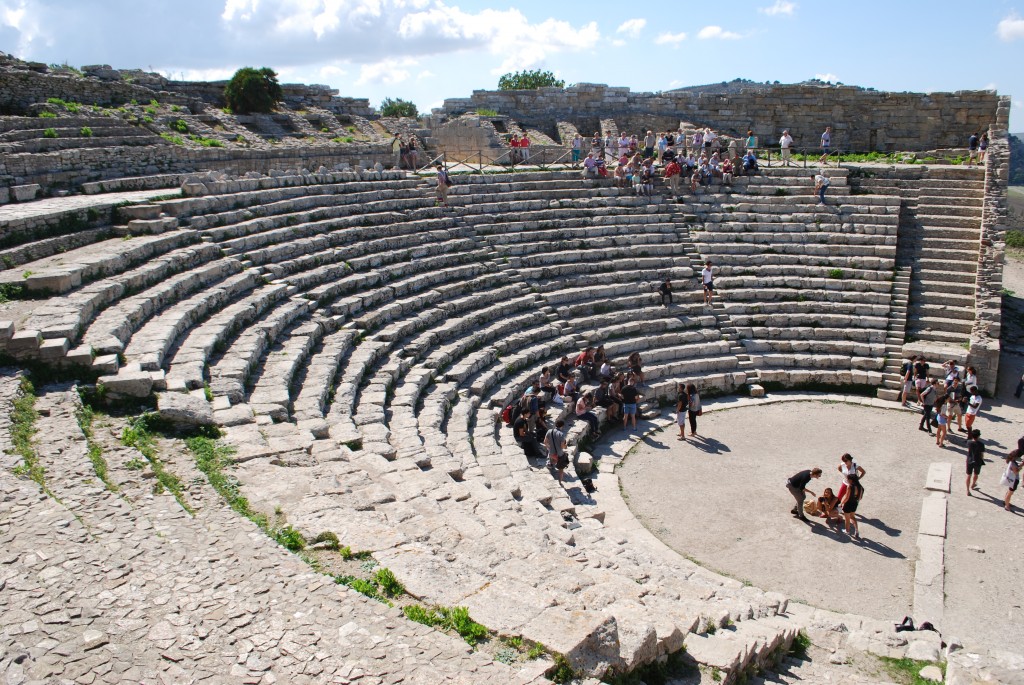Our largest and longest trip this semester was Sicily. The week-long trek to all three corners of the island was exhaustive and exhausting in the same right. The trip revolved around three main cities where we lodged: Palermo in the North, Agrigento in the South and Siracusa in the East. To get to Sicily, we took a night train that departed form Rome, broke apart and loaded onto a boat at the Messina Straight and then was put back together in Sicily. This was an interesting sight to wake up to – to say the least – but boarding the boat was nice, and provided a beautiful view as an entrance to Sicily.
Once in Palermo, we threw our belongings in the hotel, which was as large as an apartment and had a kitchen, and began touring the city. We started with three beautiful churches all around the same courtyard. Two were of Norman heritage – think middle eastern style for Christian churches – and the other was an excessive baroque masterpiece: every wall was covered with colored marbles, friezes, statues and chandeliers. After this we headed over to Palazzo Abatellis, which was, a private palazzo turned into a museum, designed by Carlo Scarpa. I really enjoyed this museum. Scarpa is a master at details and his work here revolves mostly around small connections and frames that allow the work to be viewed more interestingly or in a different way than normal. We spent the rest of the day walking around Palermo and on the coast.
The next day we began with a trip up the slope to the town of Monreale. Monreale has a very famous cathedral complex and cloisters that we spent most of the morning exploring. The entire inside of the medieval church is covered in dense, beautiful mosaic. There is a sequence of most of the book of genesis that covers the interior of the church. I overheard one of the many tour guides inside that there is at least 40kg of gold alone in these mosaics. After the church we spent some time in the cloisters, which were full of more mosaics, but this time geometrically inset into the columns. From Monreale we set off to our first ancient site. Segesta is the remains of a Greek town on a hill overlooking the coast of northern Sicily. Among the remains are an almost completely preserved temple and the town’s amphitheater. The temple, for being one of the best preserved, was actually never completed so the columns were never fluted and the cella never constructed. The amphitheater was a long and arduous trek up a hillside but afforded beautiful views and remarkable acoustics – you could hear someone ripping paper in the center all the way from the last seat.
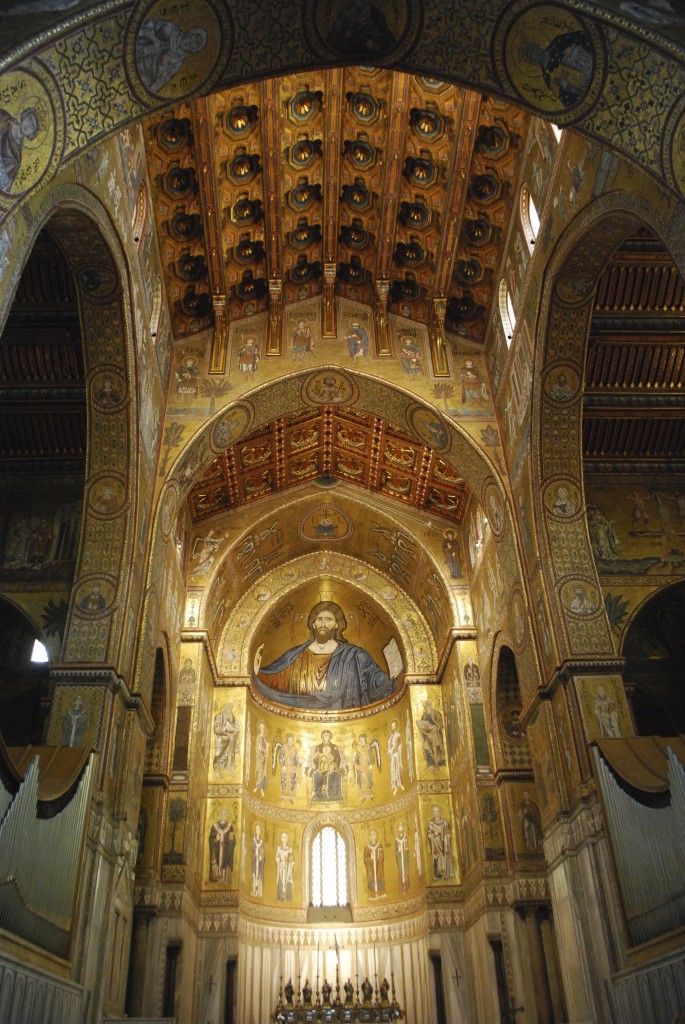
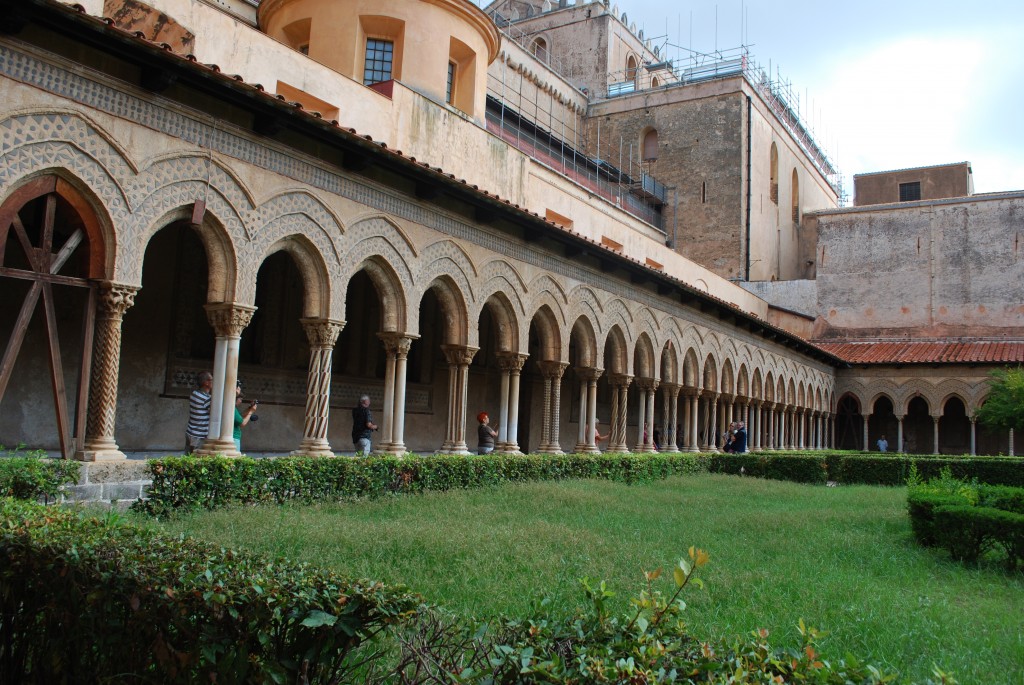
The third day we left Palermo for Agrigento. We stopped in a few towns along the way – the first of which was Gibellina. Gibellina was completely destroyed by an earthquake in 1968 and was subsequently rebuilt in a new site. The original site has become a memorial where Alberto Burri filled in the footprints of all the buildings with 4 feet of concrete, leaving only the streets. This place holds special importance to Sicilians as many people died here, and it is seen as a mass grave site as well as a memorial. It was a heavy space to say the least; one is forced to feel how very small we are amongst the enormous concrete palettes. After, we set off to the new Gibellina, which is a great example of modern Italian design and planning. The best part of Nuova Gibellina was the Spherical church that was actually rebuilt once because the concrete used collapsed (and was probably financed by the mafia). The city as a whole was remarkably nice – very well designed even on the small scale; but there was no one in it! The town felt deserted –we barely could find food for lunch in the sizeable habitation, and the only signs of life were cars, every so often, speeding through the bare streets. After Gibellina we headed to Selinunte, the ancient Greek city on the coast of southern Sicily. Here we encountered a vast temple complex with some reconstructed ruins and rubble piles of gigantic temples that were never completed. This was a very fun excursion and we were even allowed to climb and walk around the temple ruins and rubble. Getting right up on and into these temples really changes one’s perspective of the architectural size and space that the ancient Greeks were working with. From here we ventured on to Agrigento – our next lodging.
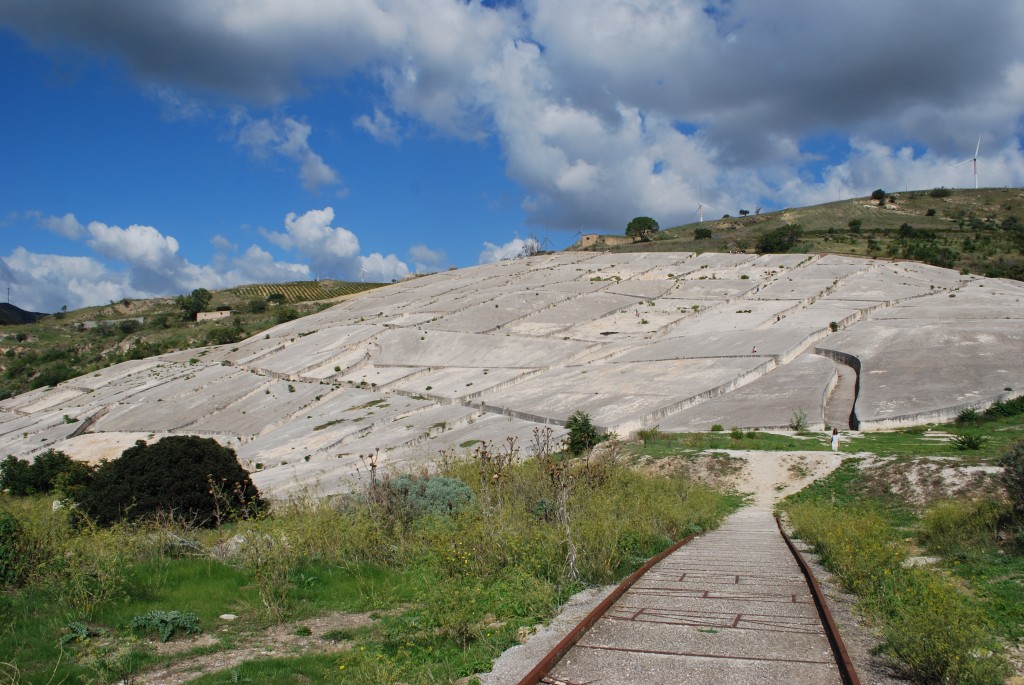
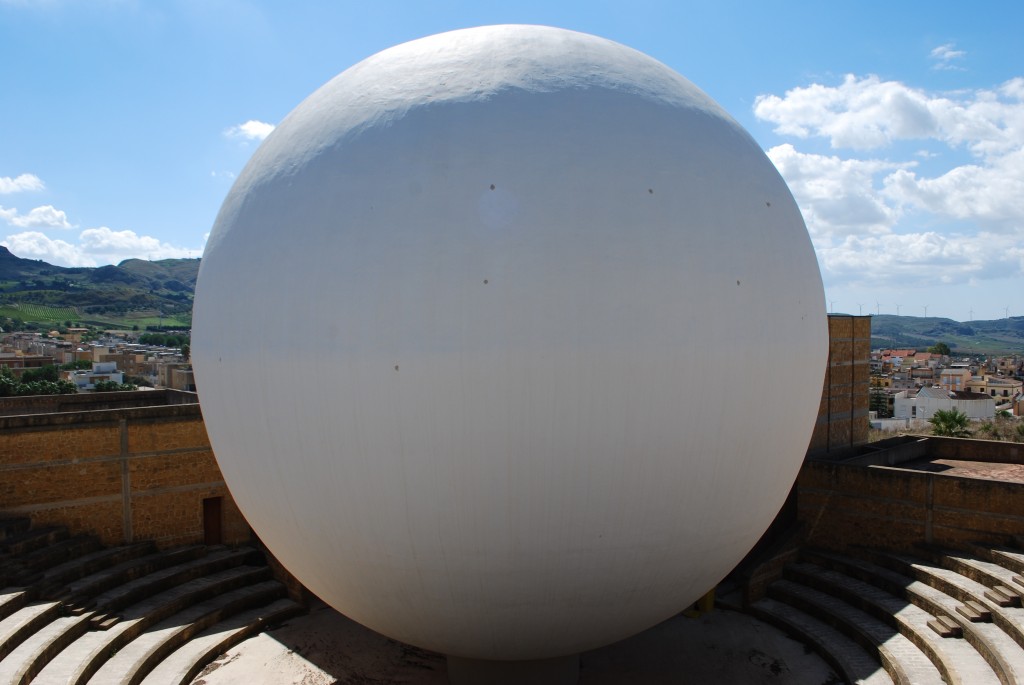
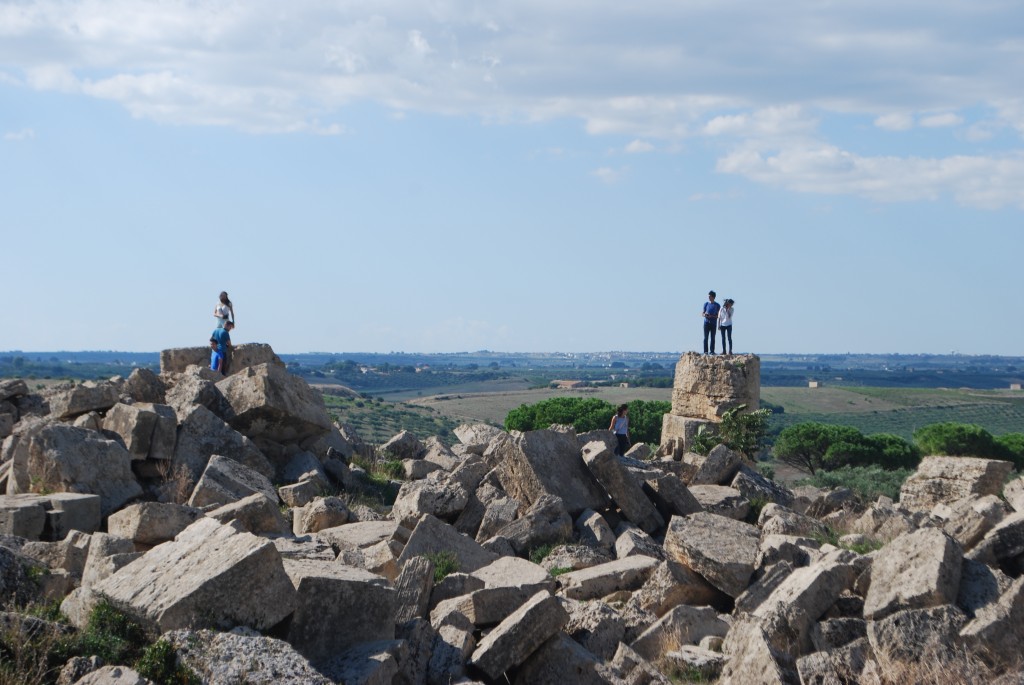
Agrigento is another Greek settlement, but this one has turned into a modern city as well. The temple complex at Agrigento is especially beautiful as the 4 temples line a prominent ridge between the town and the sea. We spent the afternoon exploring the ruins of these temples and the archeological museum that houses many great examples of Greek pottery and other items found from excavations. In the museum are the remains from the gigantic temple that was never finished here; one of the statues on the side (which was only half the height of the elevation) was at least 5 times as tall as my 6’ 4” stature. And this was only one of the dozens of replicas that once lined the temple. It was a great way to see the relative size but also absolutely amazing to see just how big these temples were becoming in the late Hellenistic period. We took lunch in old-town Agrigento, which was a sprawling complex of staircases and small alleys – an exhausting trek but definitely worth the view of the temples and sea below! The rest of the afternoon was spent at the beach – which was a great moment of relaxation in the middle of our long trip. Although it was kind of cold, we all jumped at the chance to take a dip in the Mediterranean.
After our two days in Agrigento, we headed onto our last lodging, Siracusa. Siracusa was at one time the second largest colony of the Greeks, behind Athens, and still holds much of its past today in ruins and museums. The old town of Siracusa, Ortigia, is a promontory on the harbor and was one of the most beautiful places we explored. The first day we saw the gigantic Greek amphitheater that was once used for many famous Greek tragedies – still performed here today during the summer Greek festivals. One can generally tell the size of a Greek settlement and its surrounding suburbs by the size of these amphitheaters, and there’s no denying the fact that this was a metropolis of the ancients – it was at least four times as big as the Segesta amphitheater! Behind the amphitheater were a series of caves the Greeks once used to imprison their enemies, one very beautiful one is called the Ear of Dionysus, and it was spectacular to walk into – it was at least 100 feet in height and had very beautiful curving. One can only imagine what it would have been like to be taken in here as a prisoner of the Siracusans- sobering to say the least.
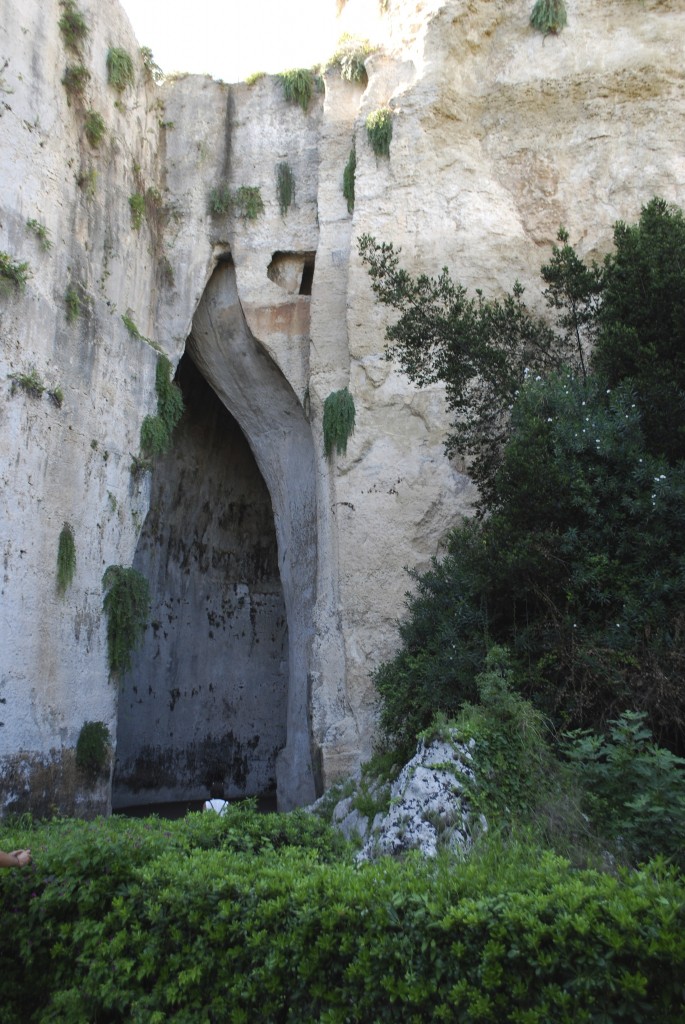
The second day was spent mostly in Ortigia, but we began by exploring some other small towns in the vicinity: Avola and Noto. Avola is mostly known for its modern hexagonal planning, and its main cathedral, which we spent some time in. Noto, though, definitely overshadowed the former. Noto is an ancient town of Sicily that was majorly rebuilt after a huge earthquake in the middle ages. Noto is also home to some of the best gelato and pastries in all of Italy. Half my time was spent exploring the countless beautiful churches on the hilly terrain of the city, while the other half was spent eating wonderful confections. In Ortigia we explored the ancient cathedrals and castles within its borders. The main cathedral of Ortigia is actually made up of an ancient Greek temple, medieval church and baroque façade all in one wonderful mash up. Walking through it was like walking through centuries of time; every step brought a different facet of the interior to life, alluding to past times and styles of architecture. It was truly inspiring.
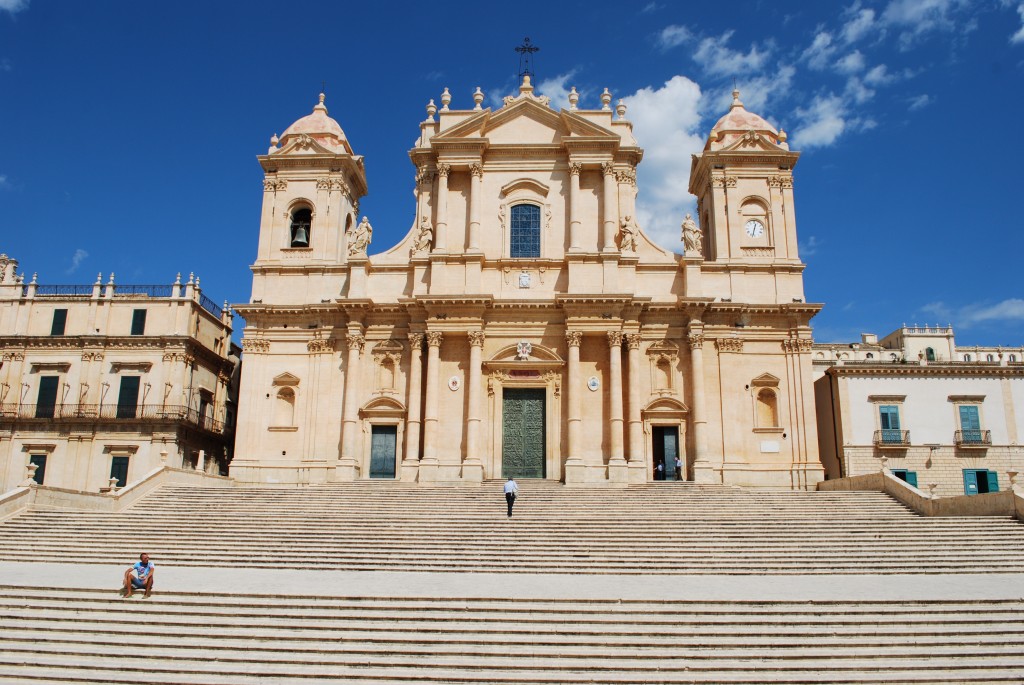
Our final day was spent in Catania, from which we would take a train in the evening back to Rome. We spent the day exploring all that Catania had to offer. Being so close to a volcanic mountain, most of the town is built from the volcanic stone it produces. This gives Catania a beautifully somber look, as most of the facades are constructed form this dark grey stone. The basilica of Catania was our first stop – a magnificently huge structure with a soberingly plain interior. We took lunch smack dab in the famous fish market, so we knew the meals we were eating had come straight from the ocean. It smelled a little fishy, but the food was great. The second part of the afternoon was mostly spent at the Benedictine Monastery which is the largest of its kind in all of Europe. The basilica was so big they actually never finished it, and the facade still today sits half constructed. The site is now half used by the University of Catania. We were all rather jealous that these kids got to run around an ancient monastery for school purposes. The final site we visited was the Benedictine convent, right down the road, and also one of the largest in Europe. The church itself was magnificent, with some of the most beautiful examples of nun cages in all of Europe.
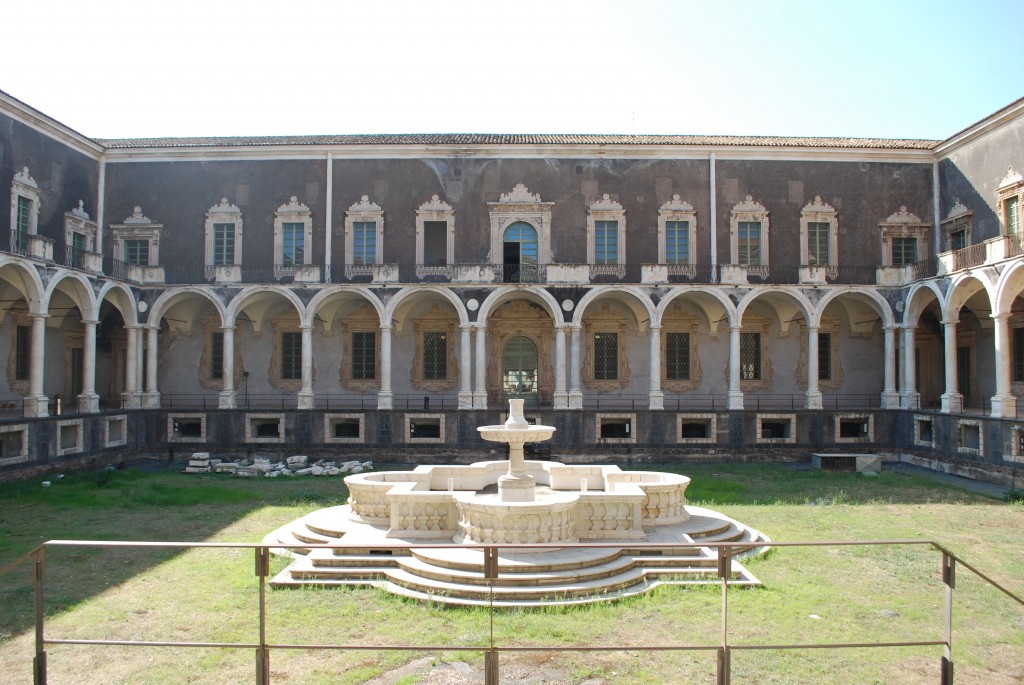
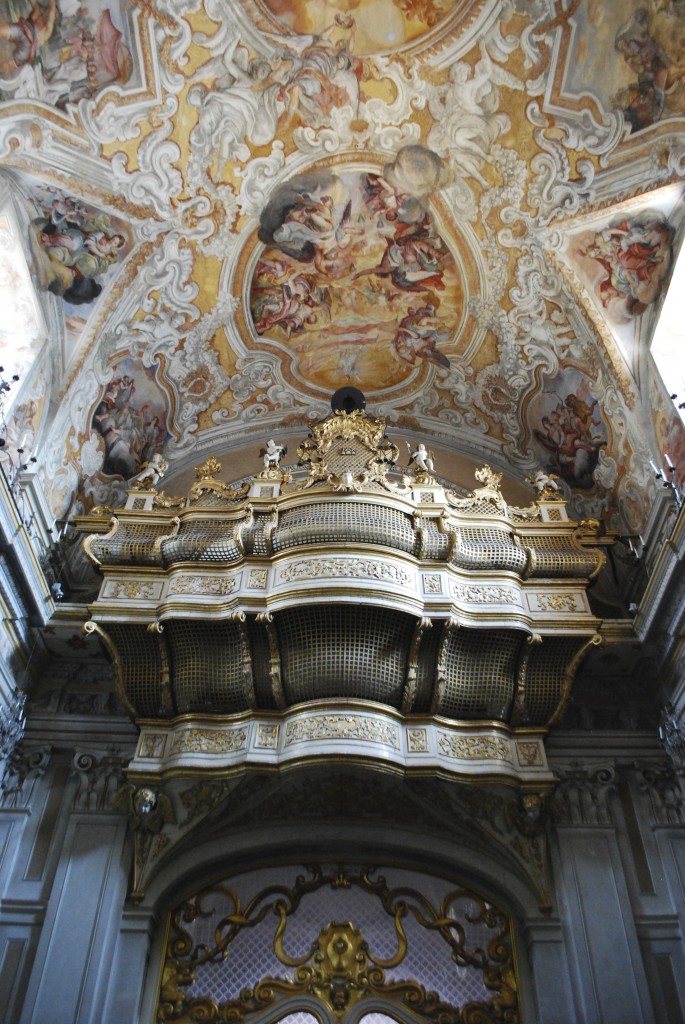
As one can only imagine, we were all completely exhausted from our week of running form site to site throughout all of Sicily. We willingly entered our night train back home and fell straight asleep. The boat across the Straight of Messina was at night this time, but still as beautiful as the morning we had first entered this historic island.

